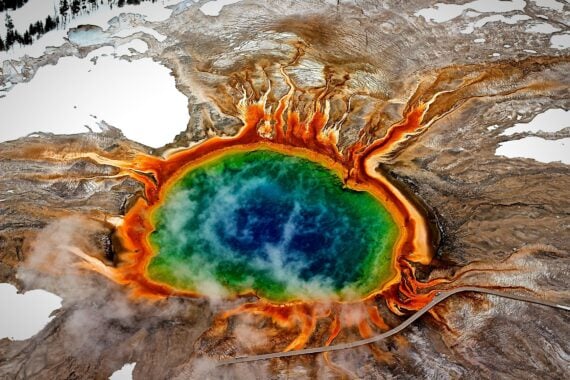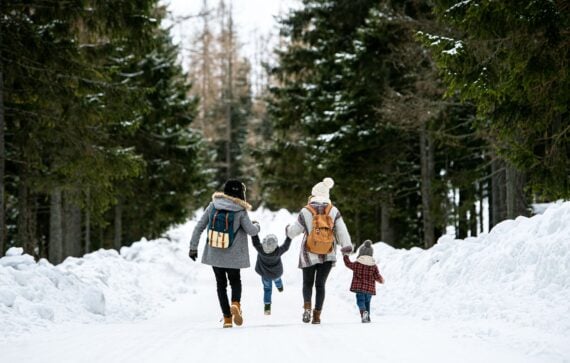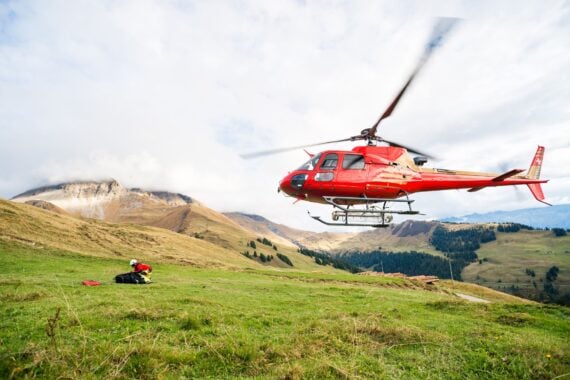Contrary to popular belief, national parks don’t shut down in winter. While there may be limited services and road closures, there’s often still plenty to do. At the top of the list? Taking in the stunning landscapes without a crowd of people to spoil the view. If you don’t feel like bundling up, don’t worry: We’ve rounded up stunning images of these American treasures that you can appreciate from your cozy home.
Related: Stunning Photos of Every National Park in America
Denali National Park | Alaska
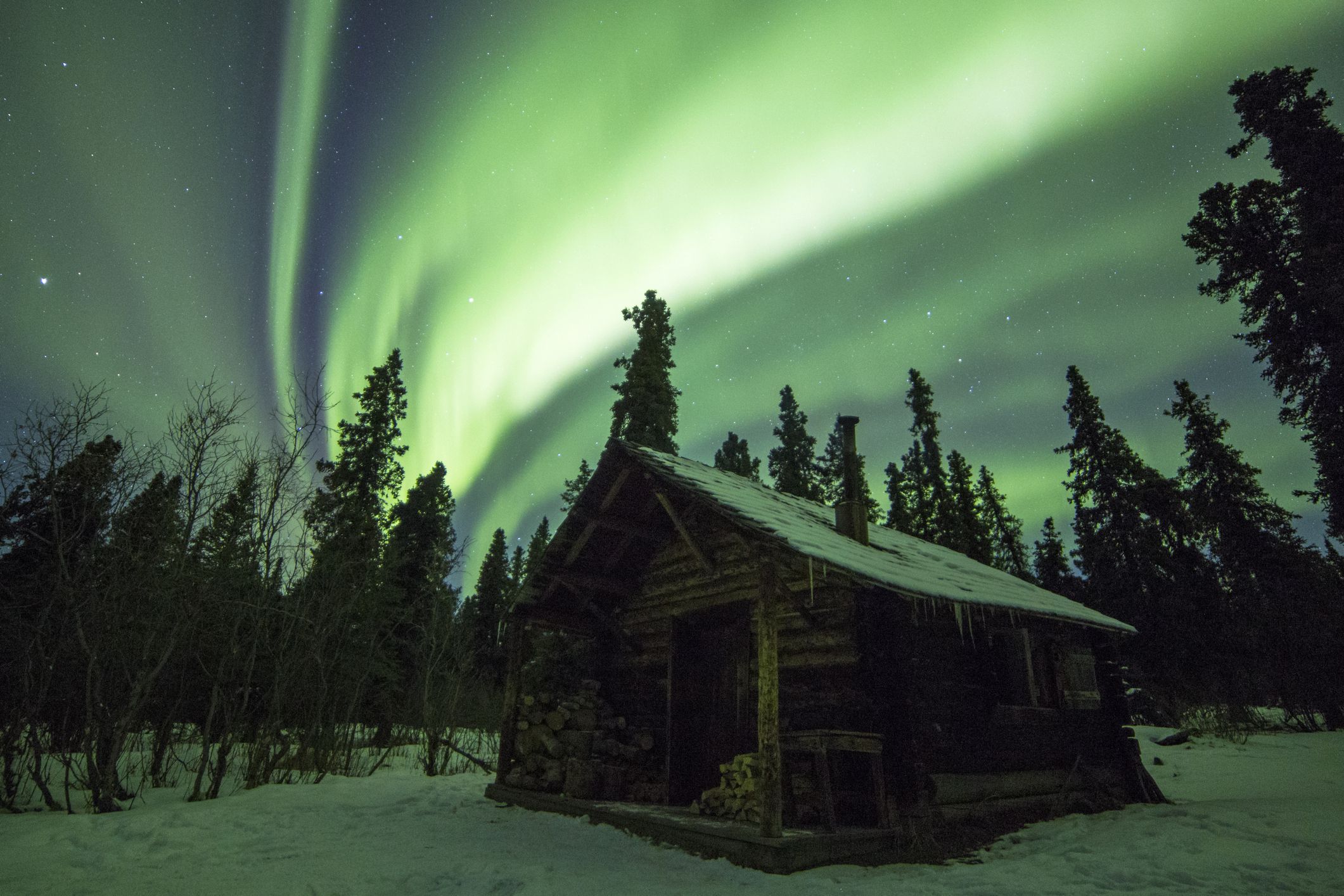
Savage Cabin, seen here against a backdrop of the northern lights, was built in the 1920s. It’s used for history presentations during the summer, and as a shelter for patrols during the winter. Though most of its main road shuts down, Denali remains open in the colder months and welcomes visitors for skiing, snowshoeing, and winter biking.
Related: Best Vacation Rentals for Seeing the Northern Lights
Yellowstone National Park | Wyoming
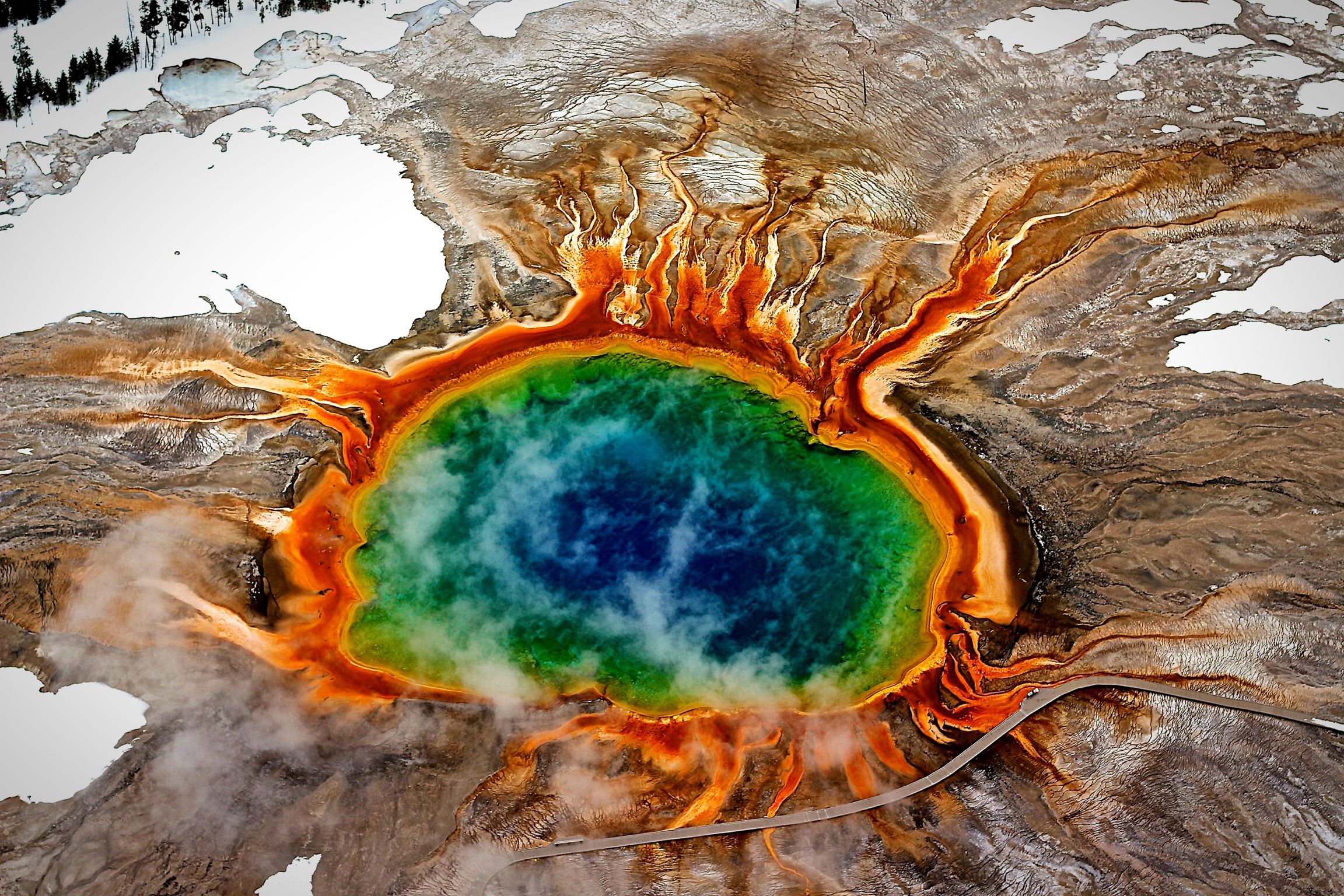
Grand Prismatic Spring, the largest hot spring in the nation, is even more dazzling when it’s rimmed with snow. While most roads in Yellowstone are off limits during winter, visitors can still see Grand Prismatic, Old Faithful, and other attractions via guided snowmobile and snowcoach tours.
Related: Natural Hot Springs to Shake Off Winter’s Chill
Acadia National Park | Maine
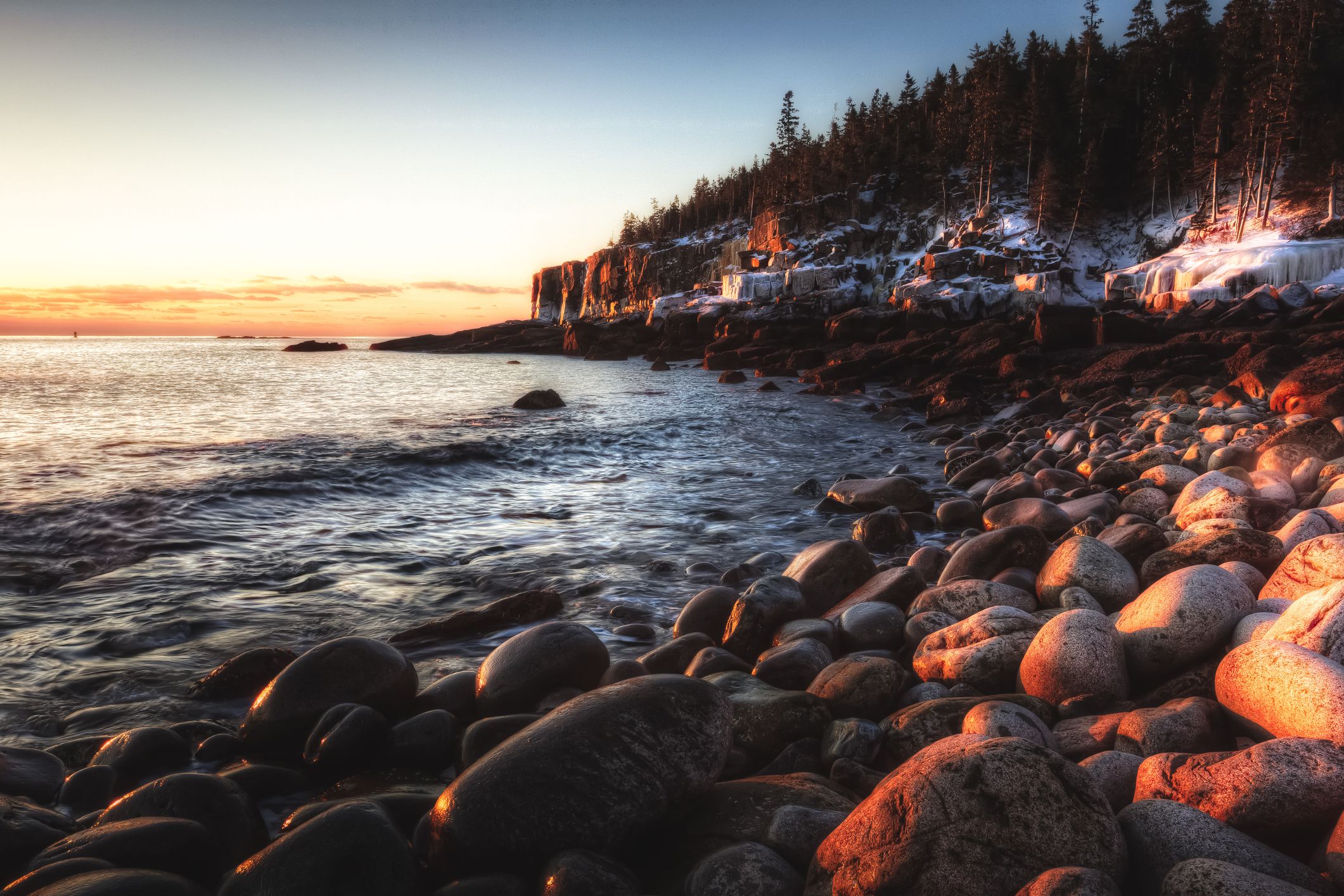
Acadia’s Otter Cliffs rise more than 100 feet above the churning Atlantic and are a popular spot for rock climbers — when it’s warmer, at least. Despite their name, there are no sea otters in the water below; they’re native to the west coast.
Related: Explore the Best National Parks in Every State
Bryce Canyon National Park | Utah
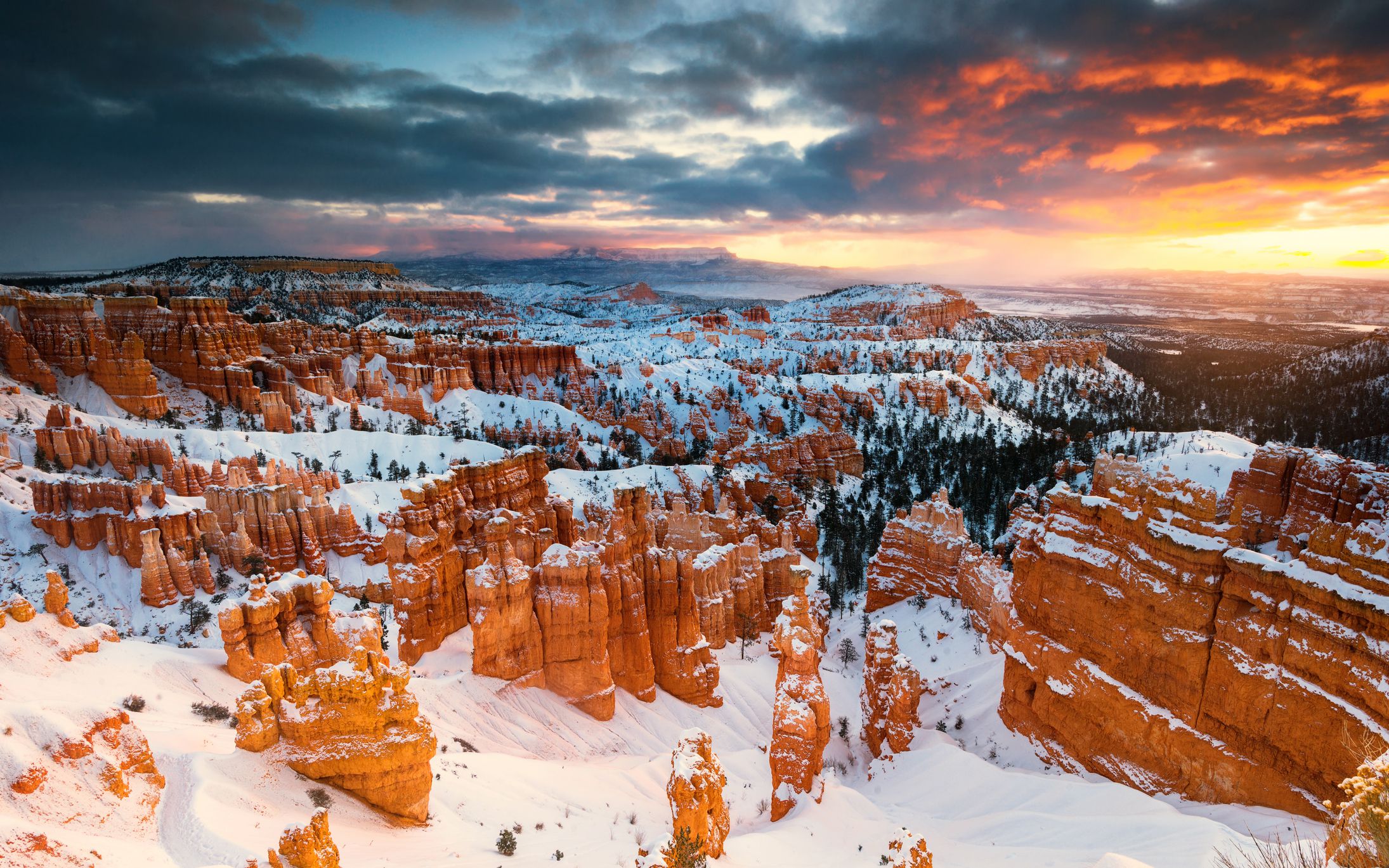
Bryce Canyon’s hoodoos, the skinny, otherworldly rock formations that jut up as tall as 10 stories, are especially captivating surrounded by a thick layer of snow. Winter visitors can still enjoy snowshoeing, cross-country skiing, hiking, backpacking, and stargazing.
Related: Amazing Views in Every State
Rocky Mountain National Park | Colorado
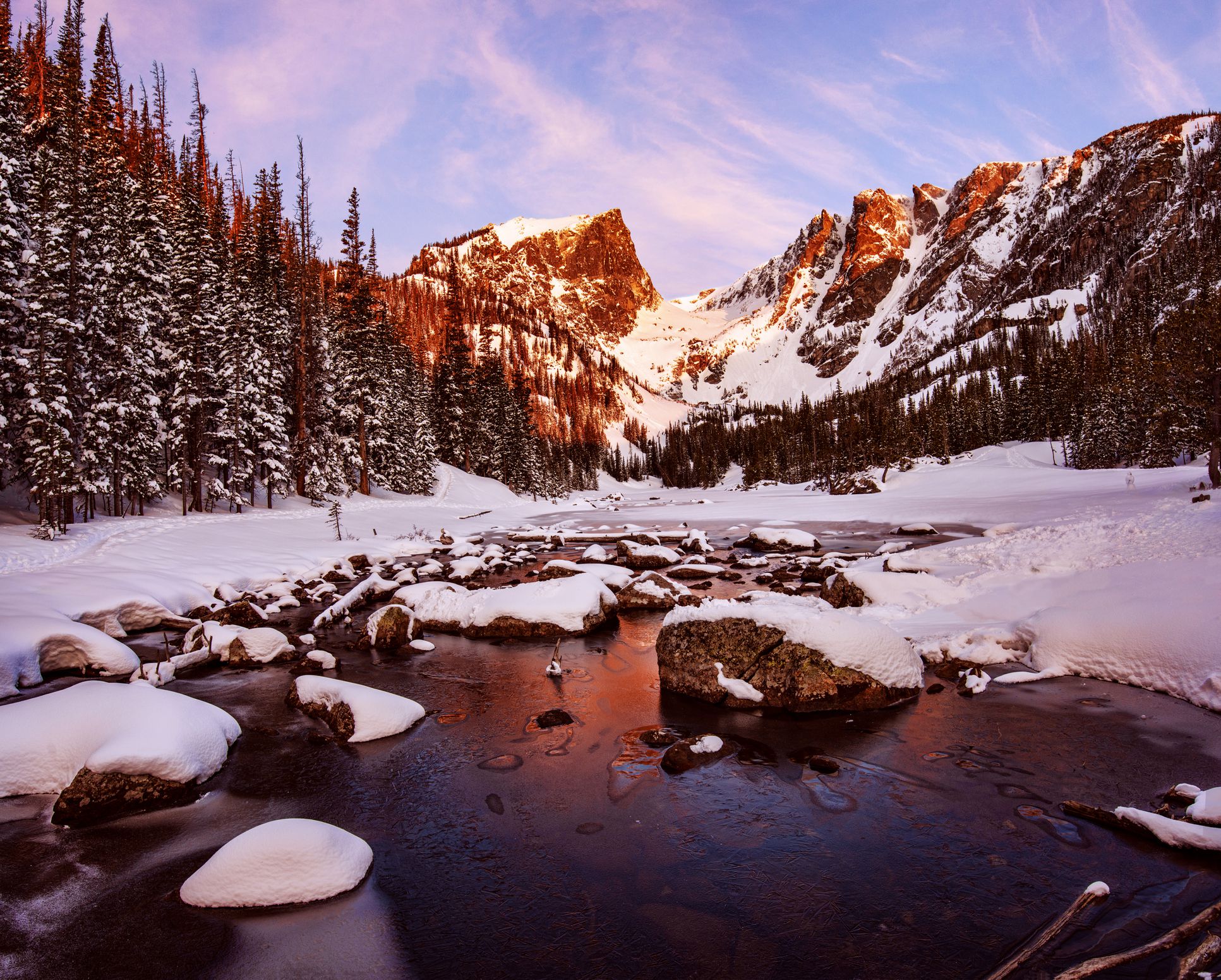
Dream Lake is one of Rocky Mountain National Park’s most scenic spots, no matter the season, but we’re guessing visitors will find the popular trail that leads there a lot less packed during the winter. The view at the end is all the more stunning because Hallett Peak’s 12,713-foot summit looms in the background.
Related: Epic Hiking Trails Around the World
Trending on Cheapism
Voyageurs National Park | Minnesota
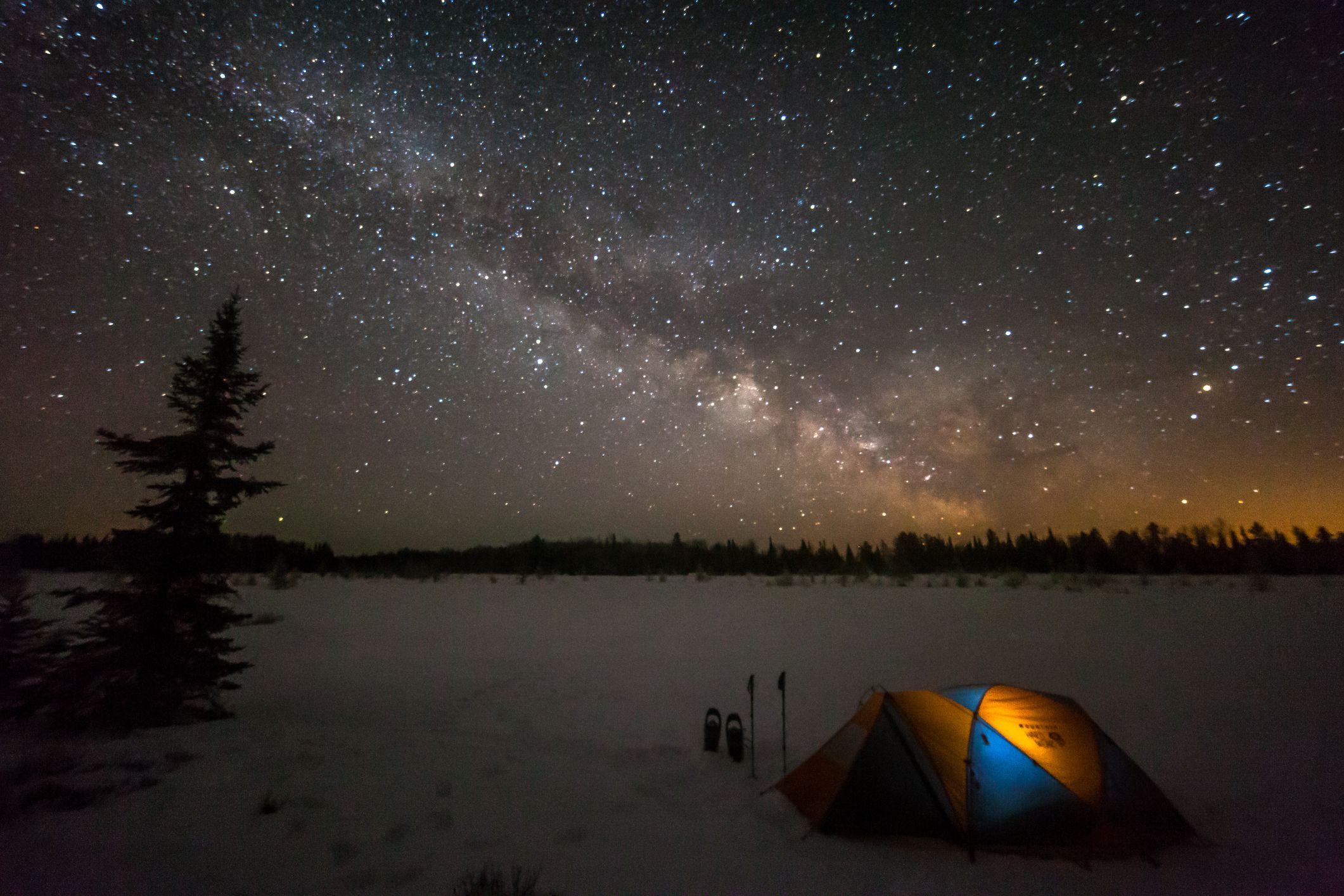
Minnesota’s Voyageurs National Park may be best known for its endless lakes and hardwood forests, but the near-absence of artificial light also makes its dark skies a must for stargazers. The park is a destination for ice fishing, snowmobiling, and cross-country skiing in the winter. It even has two ice roads open to cars and trucks, depending on conditions.
Related: Under-the-Radar National Parks to Visit
Joshua Tree National Park | California
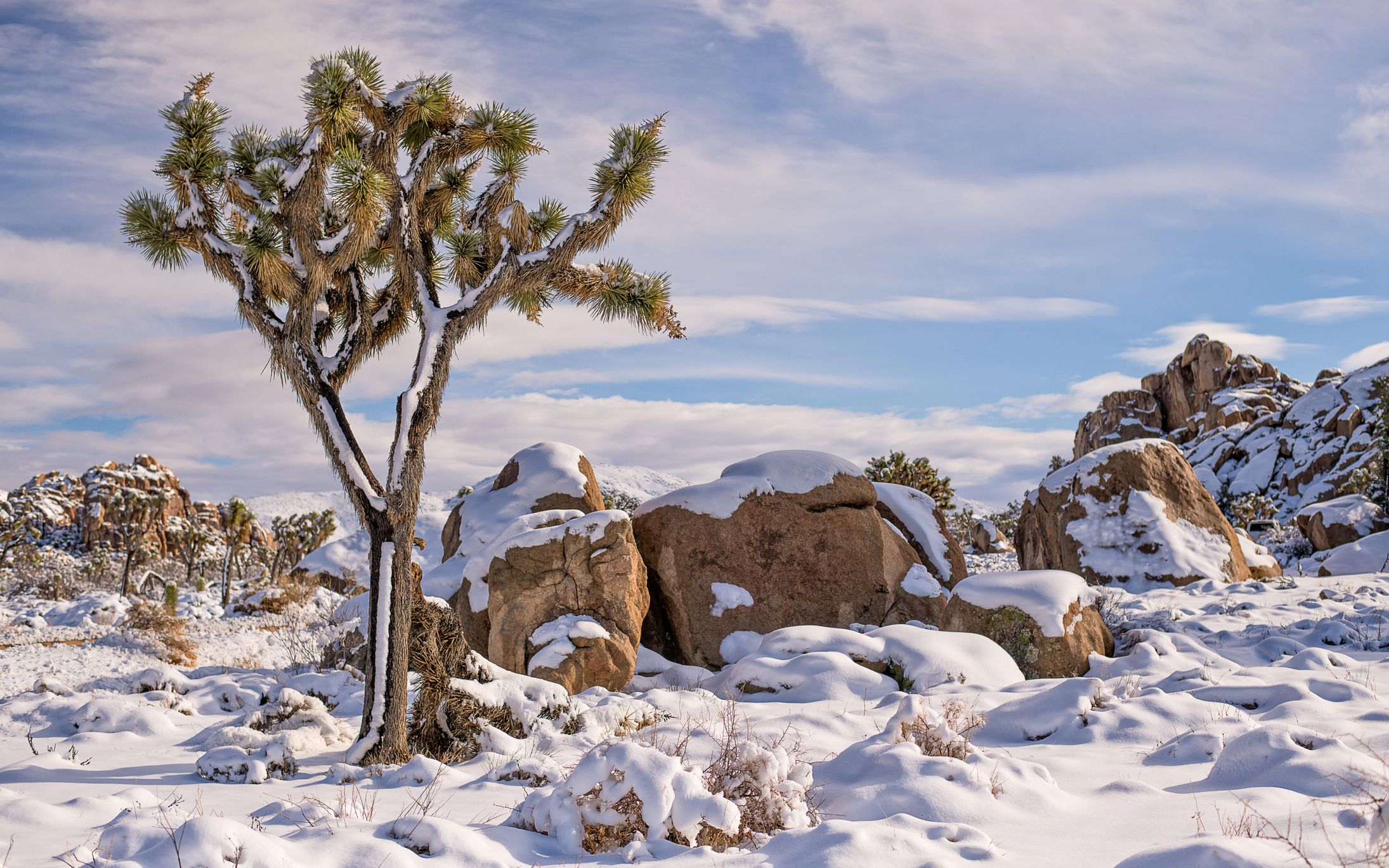
Because summer temperatures can soar past 100 degrees, far more visitors flock here during winter. Pleasantly cool temperatures top out around 60 degrees, with frigid nights. And while a thick blanket of snow obviously isn’t unheard of, it’s a rare sight.
Related: Most Beautiful Places to Camp Across America
Smoky Mountains National Park | Tennessee
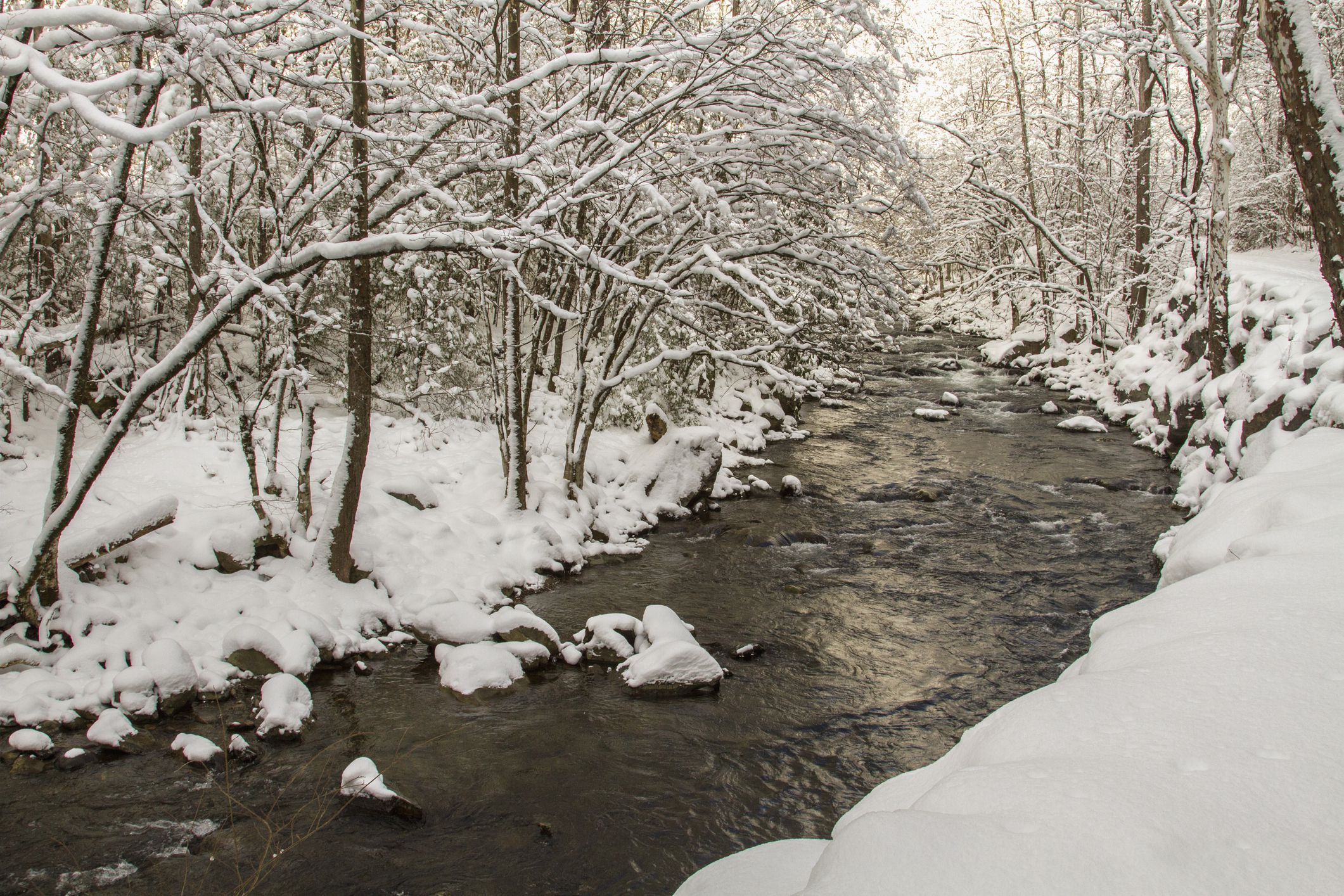
The white stuff is a lot more elusive in the Smokies than most may realize — lower elevations often only receive a dusting, and even that doesn’t stick around long. As the park service notes, the park’s peaks receive a lot more snow than the lowlands, and it’s not uncommon for winter temperatures to hit the 60s.
Related: Bucket List RV Trips for 2021Sign up for our newsletter
Arches National Park | Utah
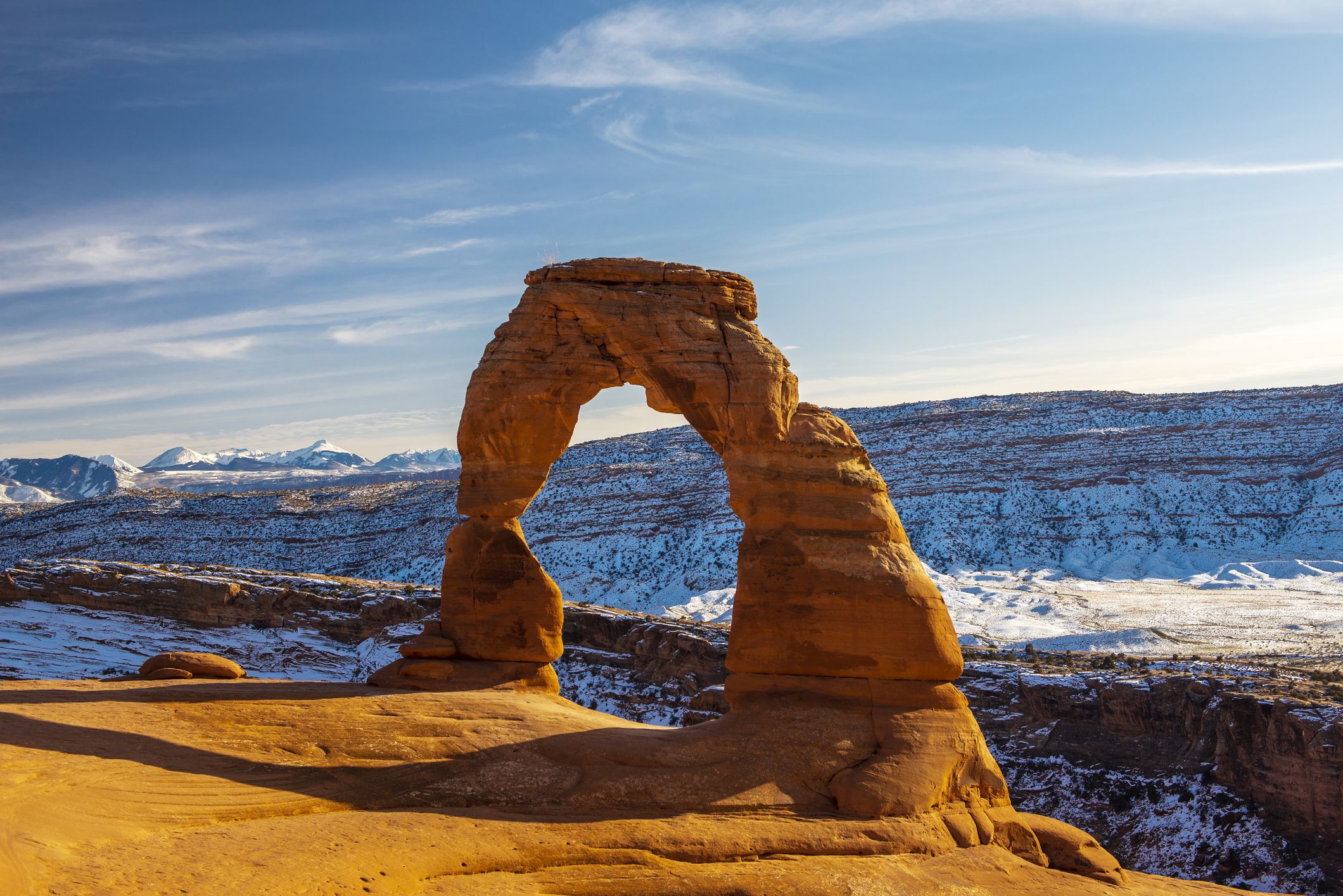
Delicate Arch, the largest free-standing arch in Arches National Park, is even more stunning against a backdrop of snowy ridges. As long as conditions permit, the strenuous hike to the landmark is stunning in winter, with a little more solitude and manageable temperatures.
Related: Stunning Photos of Iconic Landscapes in the American West
Sequoia National Park | California
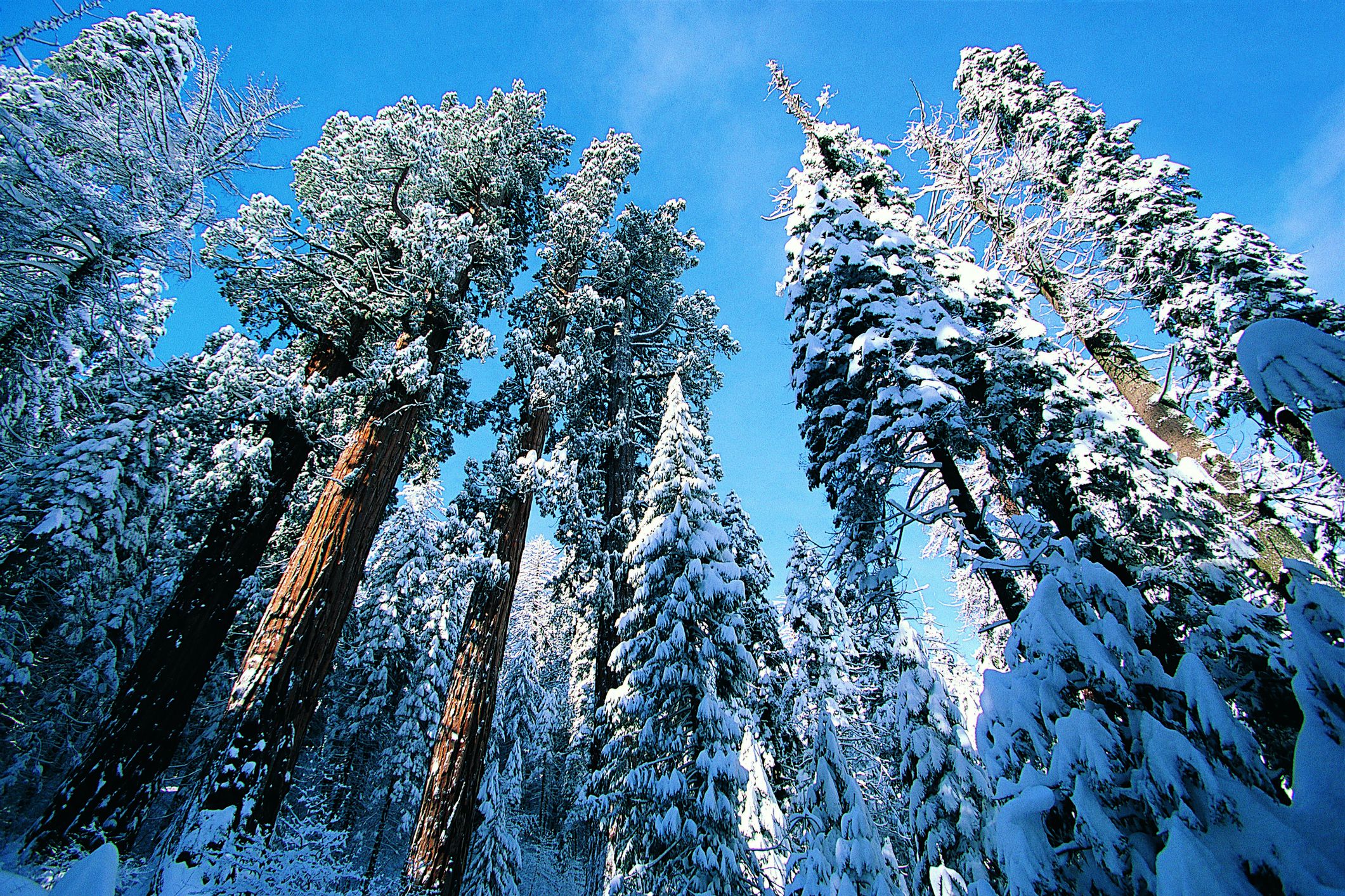
Sequoia’s massive namesake trees are used to a little winter precipitation. The park regularly sees sudden storms and substantial snow, and snowshoeing and cross-country skiing are allowed through some of its most famous groves. There are also designated snow-play areas in the park.
Related: Beautiful and Budget-Friendly Road Trips Across America
Great Sand Dunes National Park | Colorado
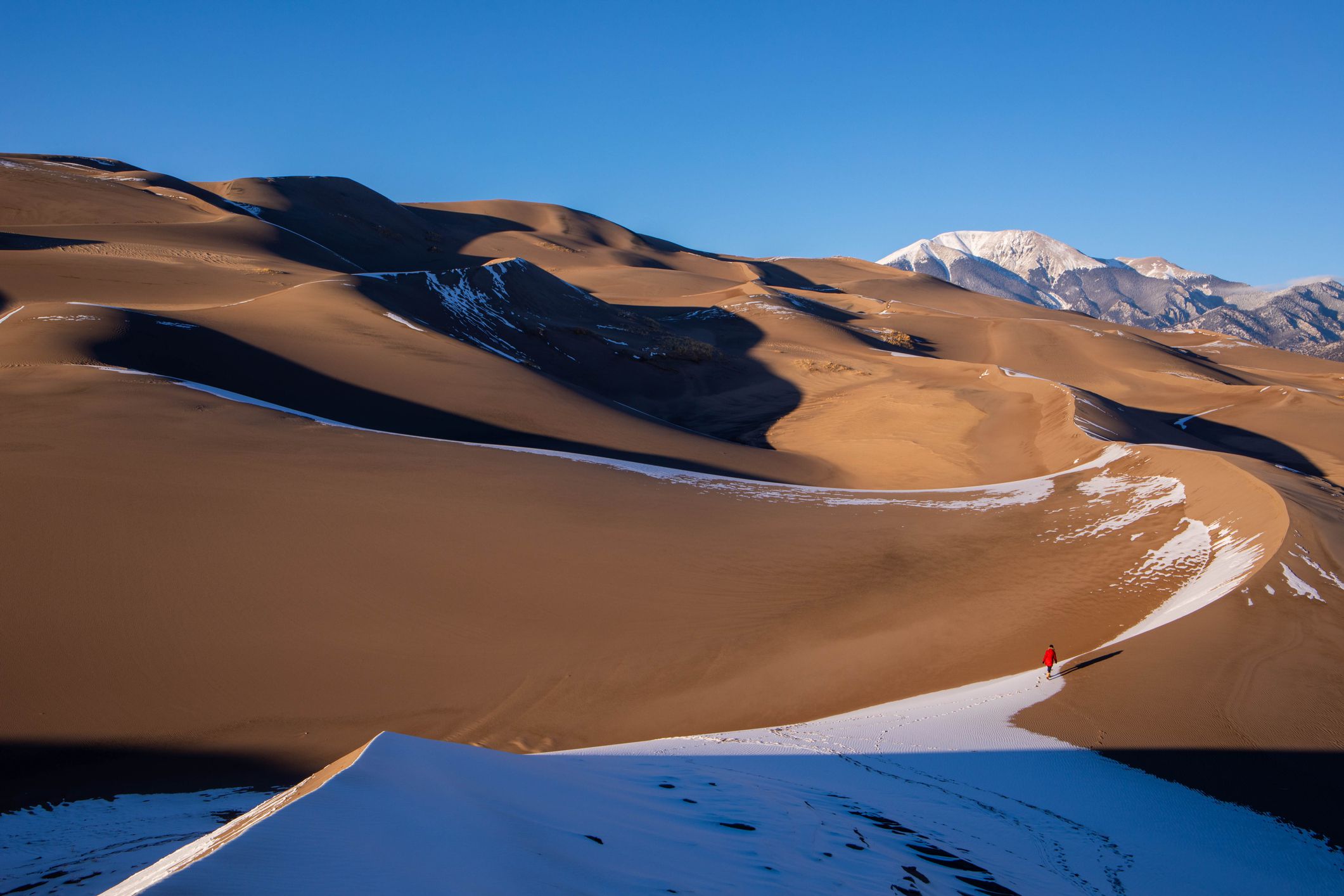
Snow on the sand may seem like an odd sight, but flakes hit the dunes roughly once a week during winter. Still, would-be sledders don’t actually have to wait for snow; sandboarding and sand sledding using special equipment are one of the park’s most popular activities all year round.
Related: Money-Saving Tips for Visiting National ParksGrand Teton National Park | Wyoming
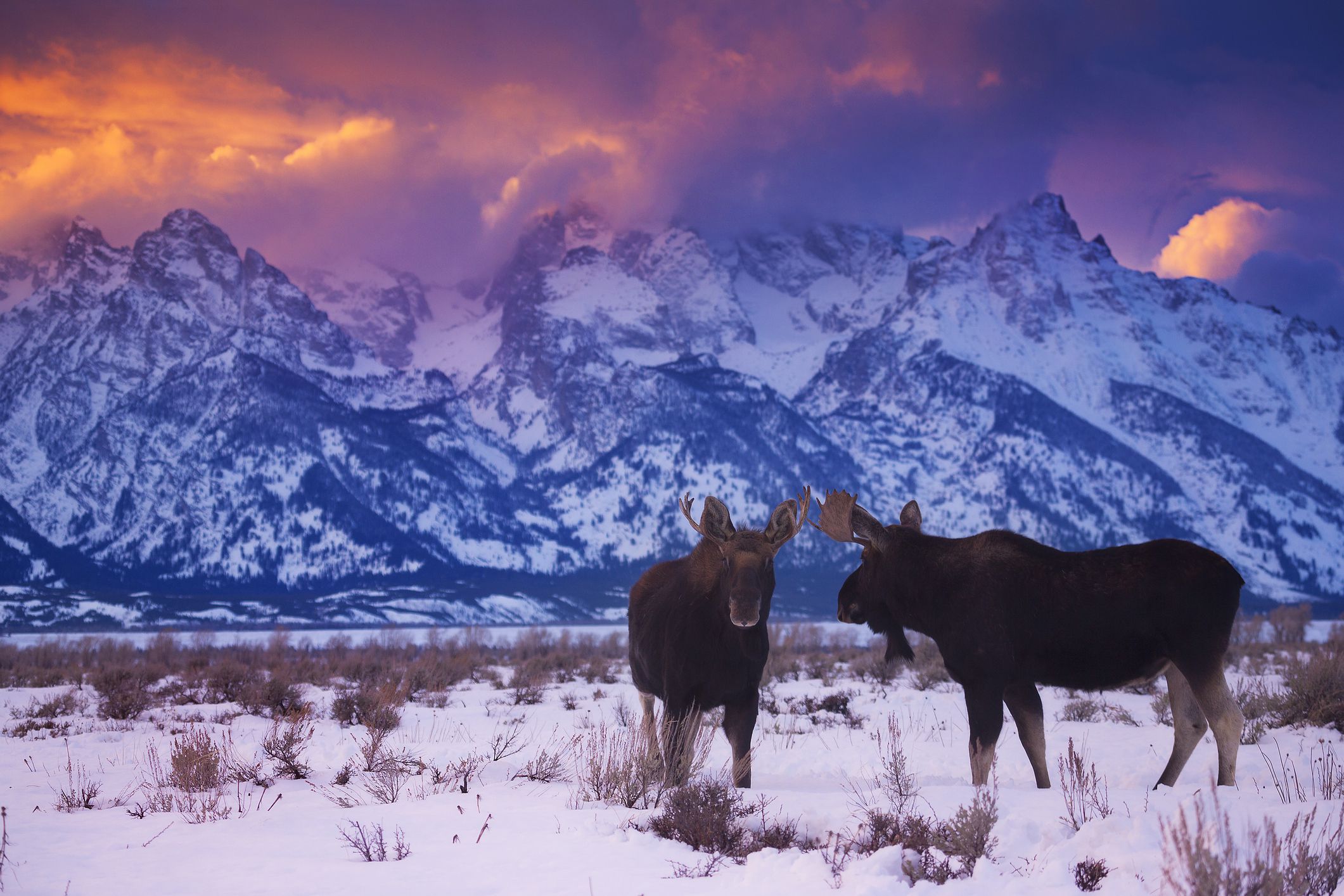
Winter might be one of the most dazzling times of year to see the dramatic Tetons, not least of which because the crowds disappear. The snow is deep and frequent, with the park averaging a whopping 172 inches a year. Fortunately, long-legged moose are able to forage just fine when snow is on the ground.
Zion National Park | Utah
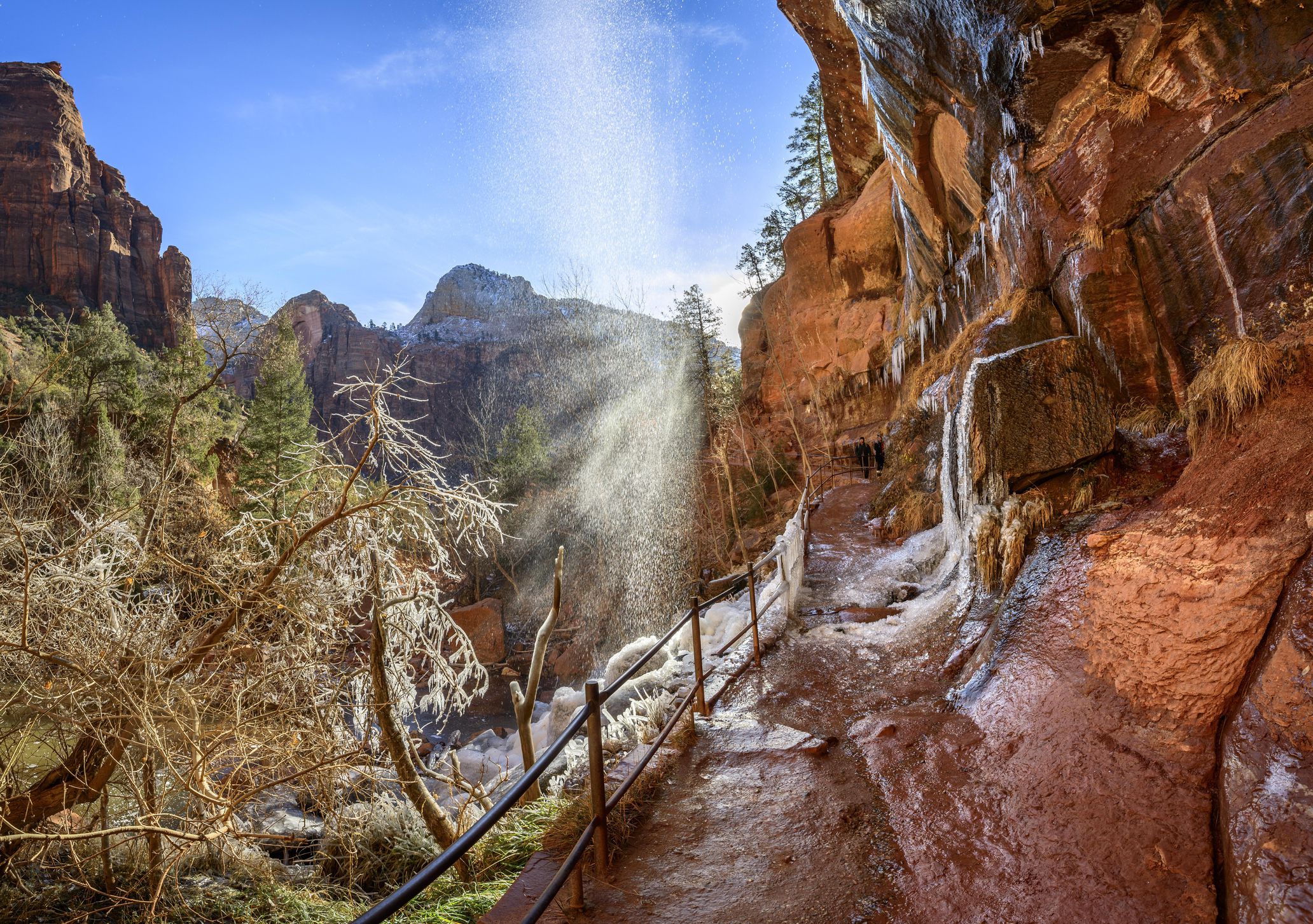
One of Zion’s most popular hikes, the Emerald Pools trail is even more lovely with icicles hanging from the red rocks. Moderate temperatures with average highs in the 50s and lows in the 30s make winter a good time to explore, especially since summer temperatures can easily soar past 100.
Yosemite National Park | California
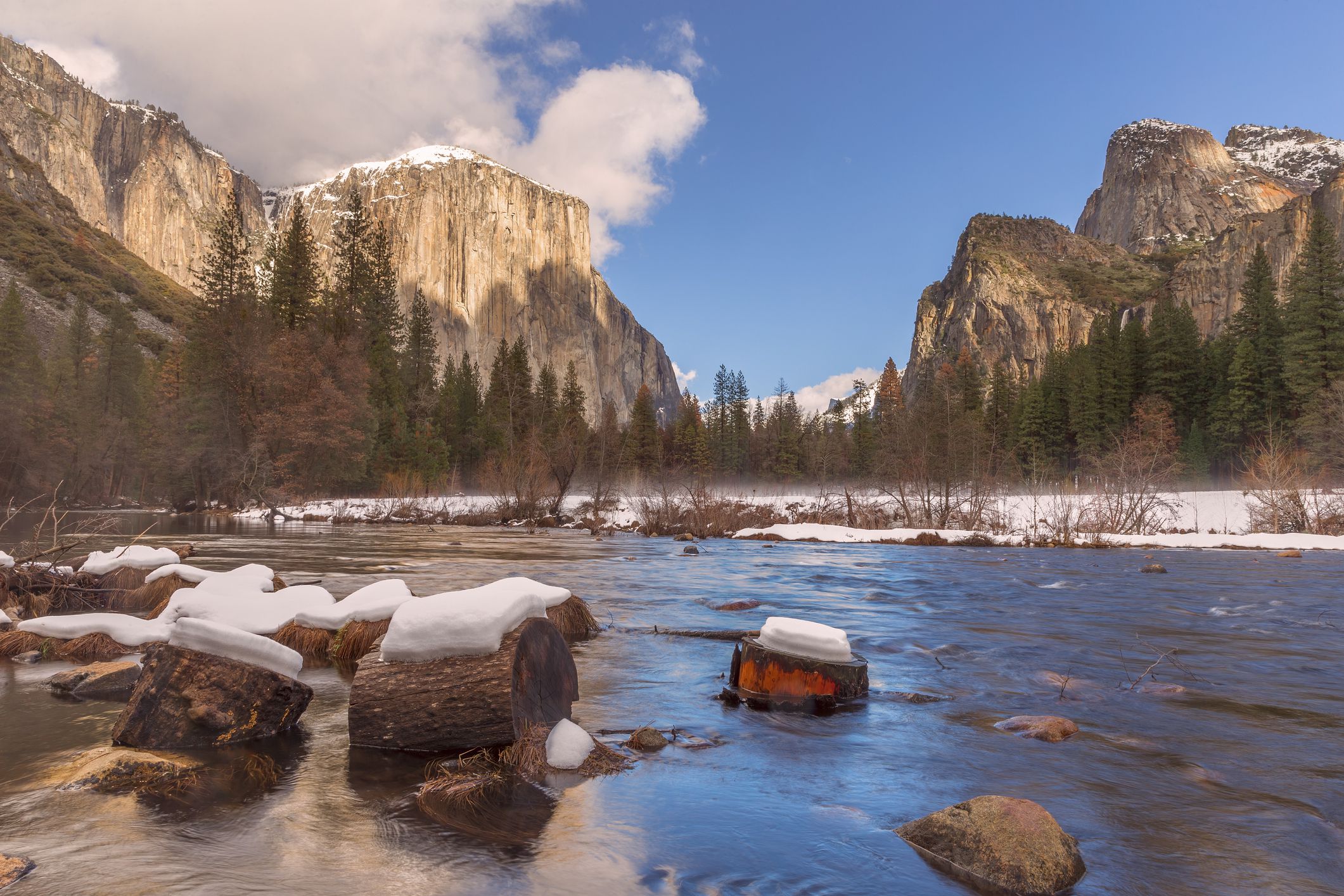
Yosemite’s iconic Half Dome, rising above the Merced River, is just as beautiful during the winter. However, the cables that make the famously arduous climb possible for non-climbers are removed in October and don’t go back up until Memorial Day.
Related: Bucket-List Experiences in America’s National ParksCanyonlands National Park | Utah
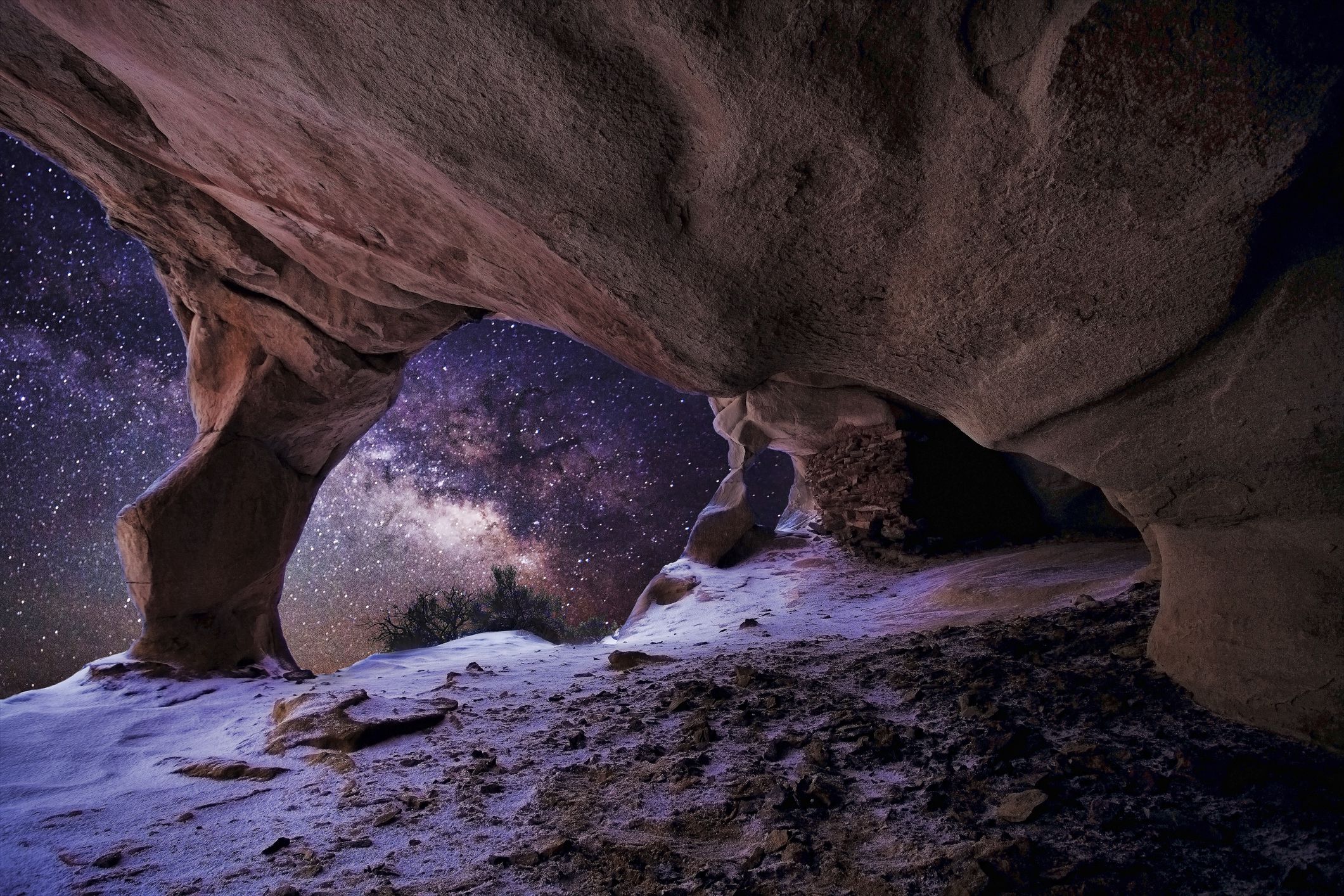
A starry sky stretches beyond an ancient granary in this expansive national park, Utah’s largest. Evidence of early inhabitants is sprinkled throughout Canyonlands, and visitors can still see rock carvings and paintings, Puebloan homes, and other preserved structures.
Related: Historic National Park Photos For Vintage Views
Glacier National Park | Montana
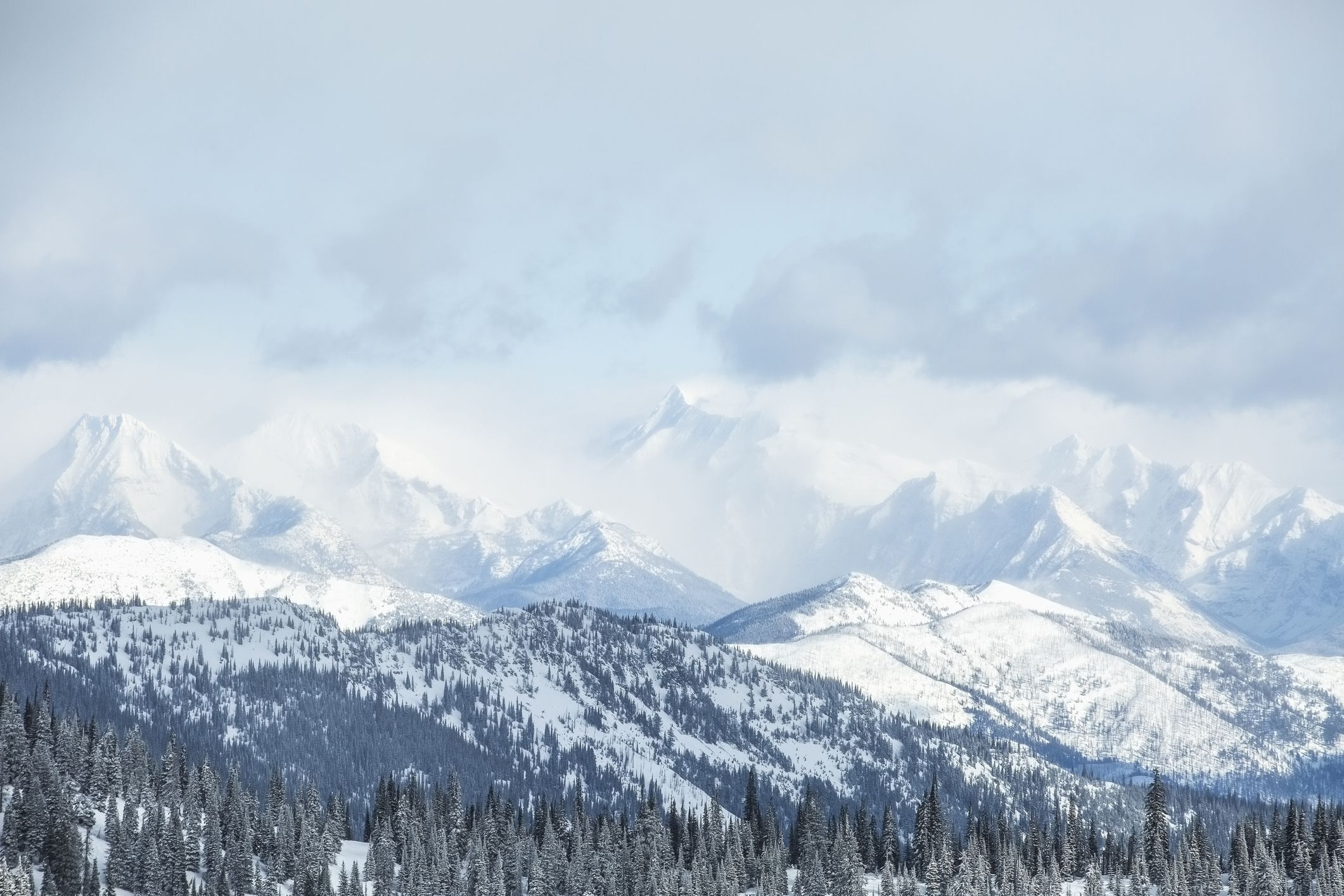
Most of Glacier’s roads close down during winter, making cold-weather visits short and sweet except for the most intrepid skiers and snowshoers. The park’s famed Going-to-the-Sun Road is typically open only from late June into October, and snow can linger at higher elevations well into summer.
Related: Free Adventures at National Parks
Cuyahoga Valley National Park | Ohio
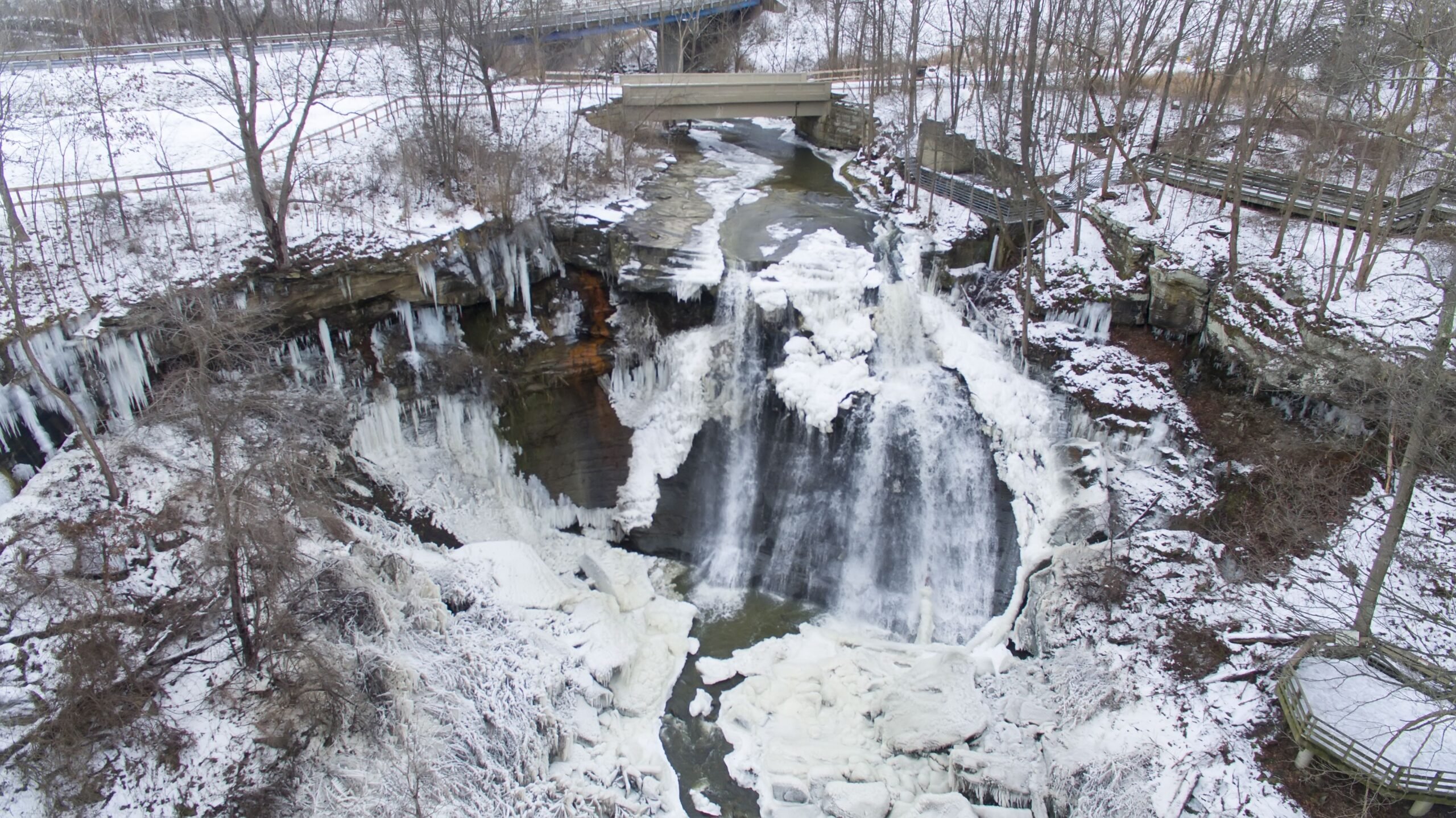
Just a short drive from Cleveland, Cuyahoga Valley is one of the country’s most accessible national parks. Its crown jewel, 60-foot Brandywine Falls, turns into a frozen wonderland during the winter, and visitors have their pick of winter sports thanks to frequent lake-effect snow from nearby Lake Erie.
Related: Where to Find Waterfalls in All 50 States
Grand Canyon National Park | Arizona
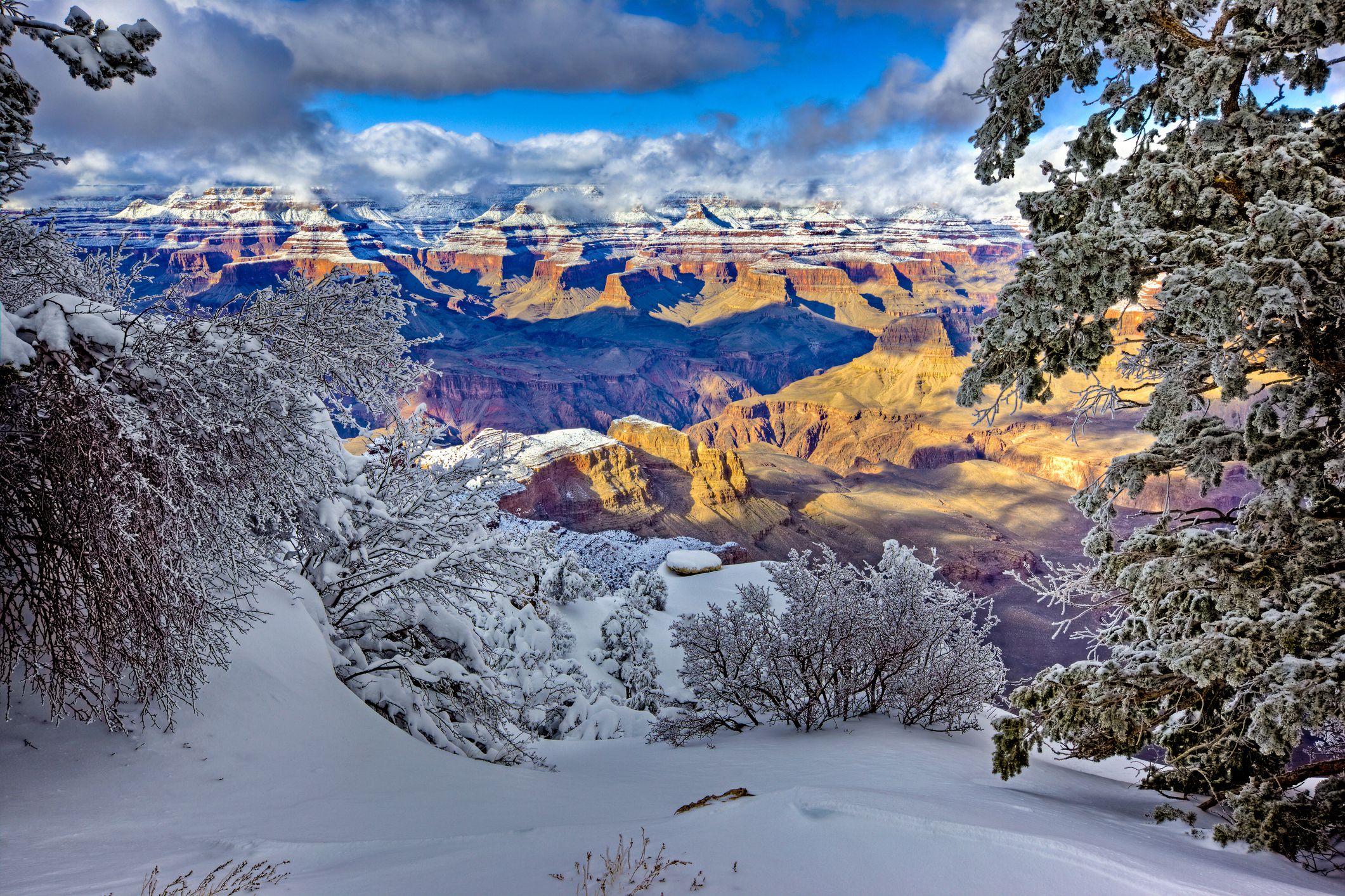
Winter can give visitors to the Grand Canyon a little more elbow room for getting those stunning photographs. While the North Rim is closed to cars, the more-traveled South Rim remains open. Hikers may also find it easier to get a much-coveted backcountry hiking permit during the colder months.
Related: Amazing Places to Take a Selfie in All 50 States
Death Valley National Park | California
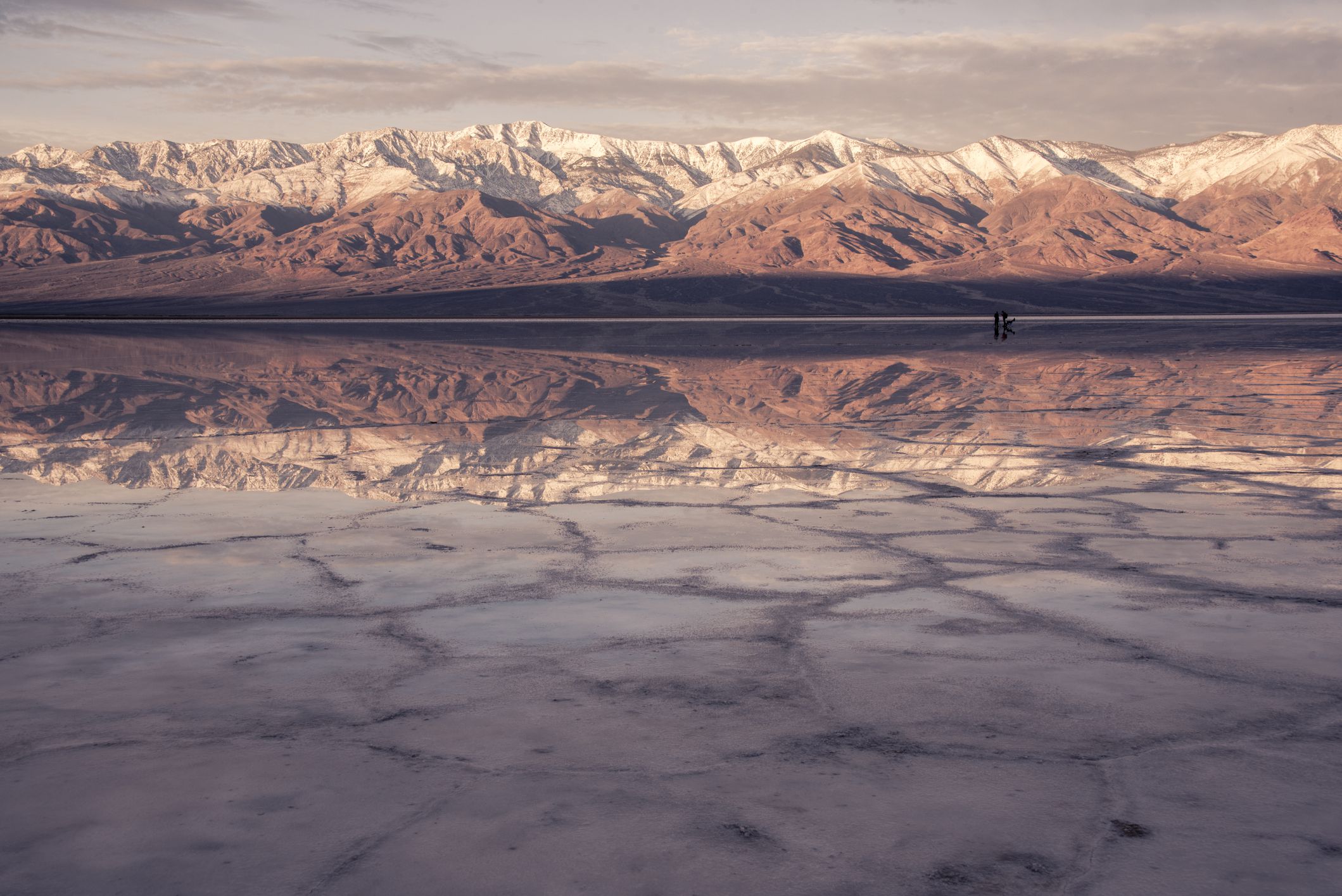
Considering Death Valley hit 130 degrees in August, winter seems like a much more palatable time to visit attractions like the saltwater flats of Badwater Basin, North America’s lowest point. Highs in the mid-60s are common, and the park sees an average of about a third of an inch of rain in February — its wettest month of the year.
Related: Stunning Landscapes That Make Earth Look Like Another Planet
Olympic National Park | Washington
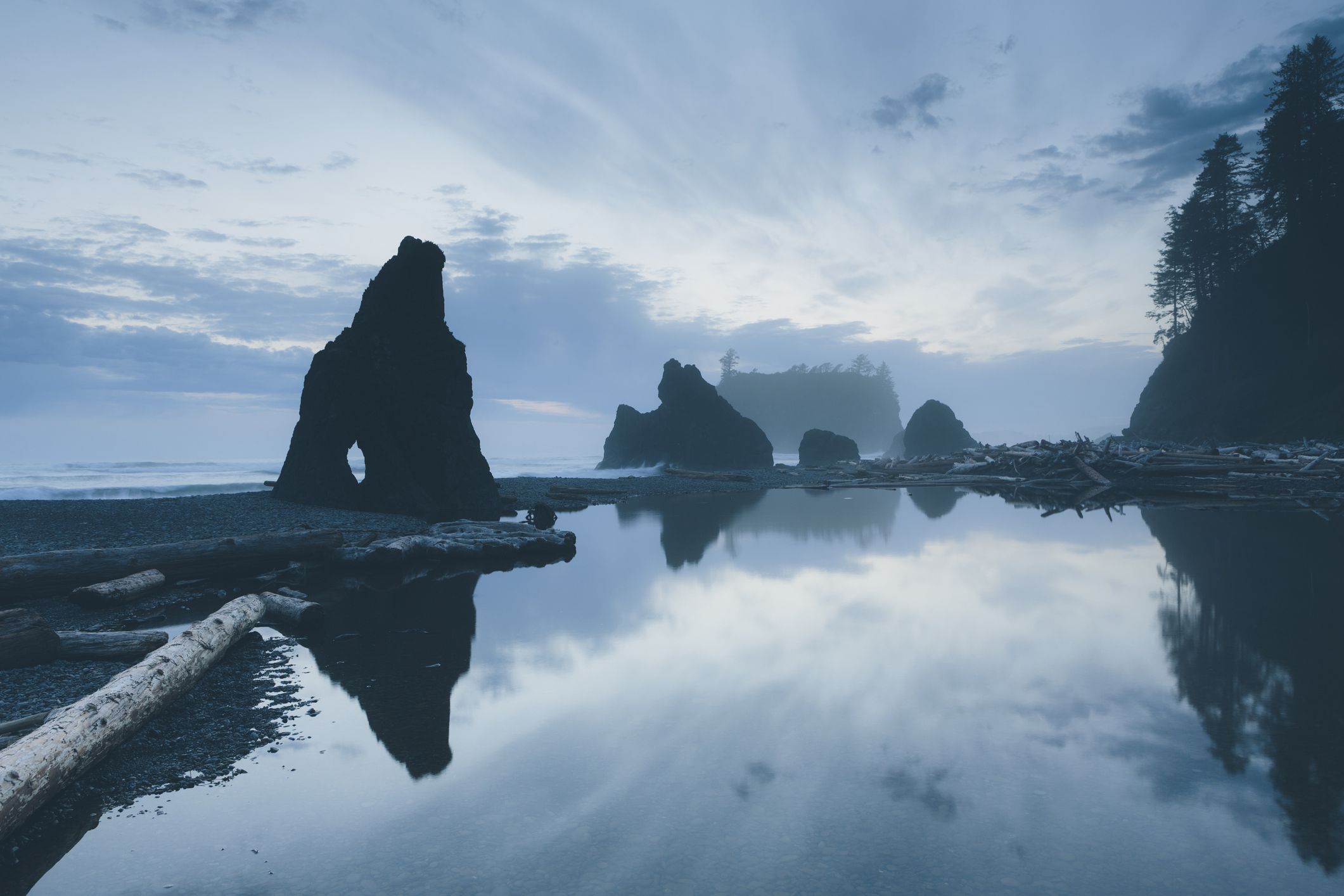
A damp, wintry fog shrouds Ruby Beach, leaving one of the most-visited spots in Olympic National Park relatively silent. Visitors will find abundant bird life, teeming tidepools, rock formations, weathered logs, and tall pines any time of year.
Related: Surprising Facts About America’s Beaches
Badlands National Park | South Dakota
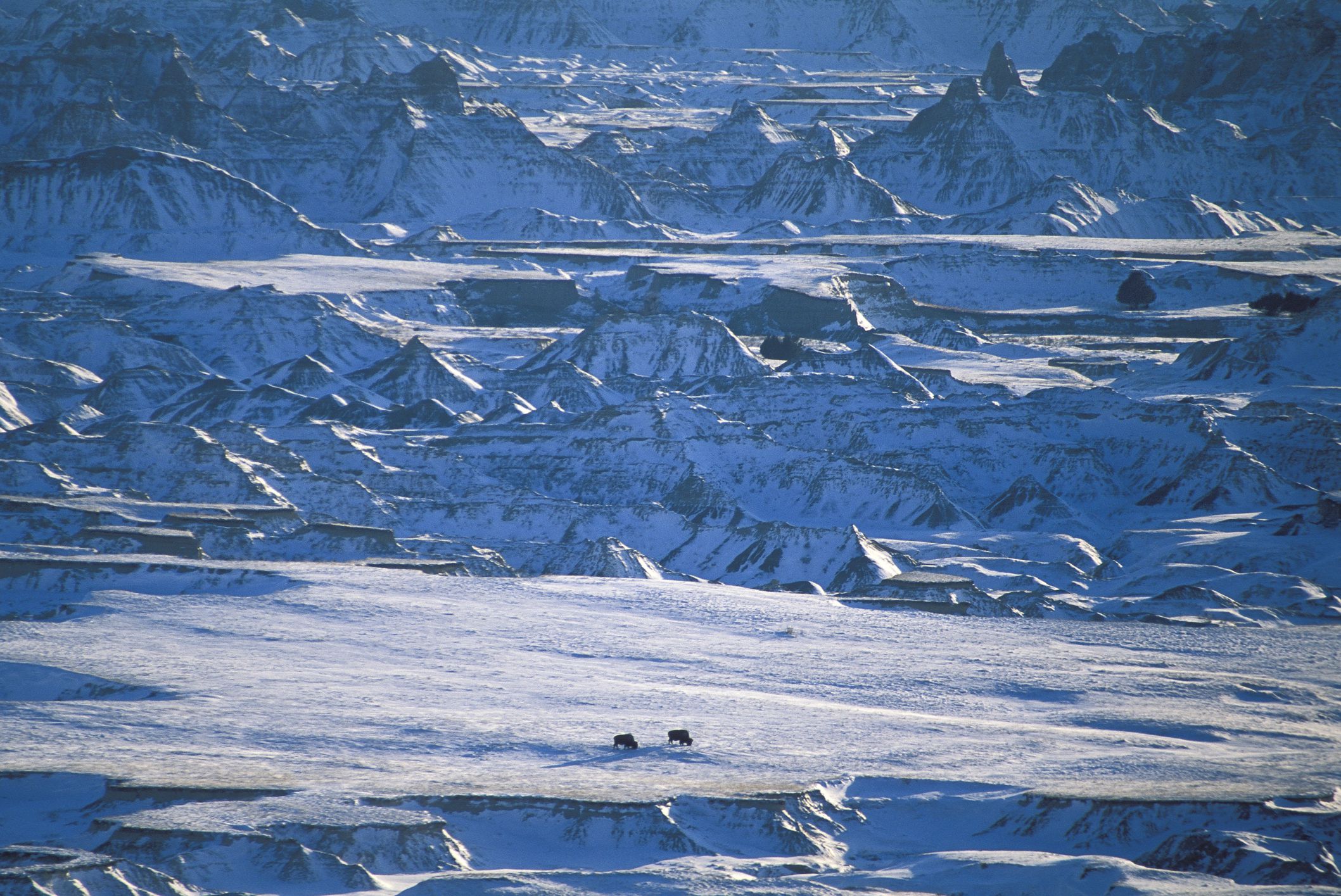
Winters are frigid in the Badlands, with average high temperatures in the 30s, lows in the teens, and plenty of wind to make it feel even colder. The park’s bison don’t seem to mind, though — they stay put thanks to a robust built-in winter coat, and plow through the snow with their massive heads.
Crater Lake National Park | Oregon
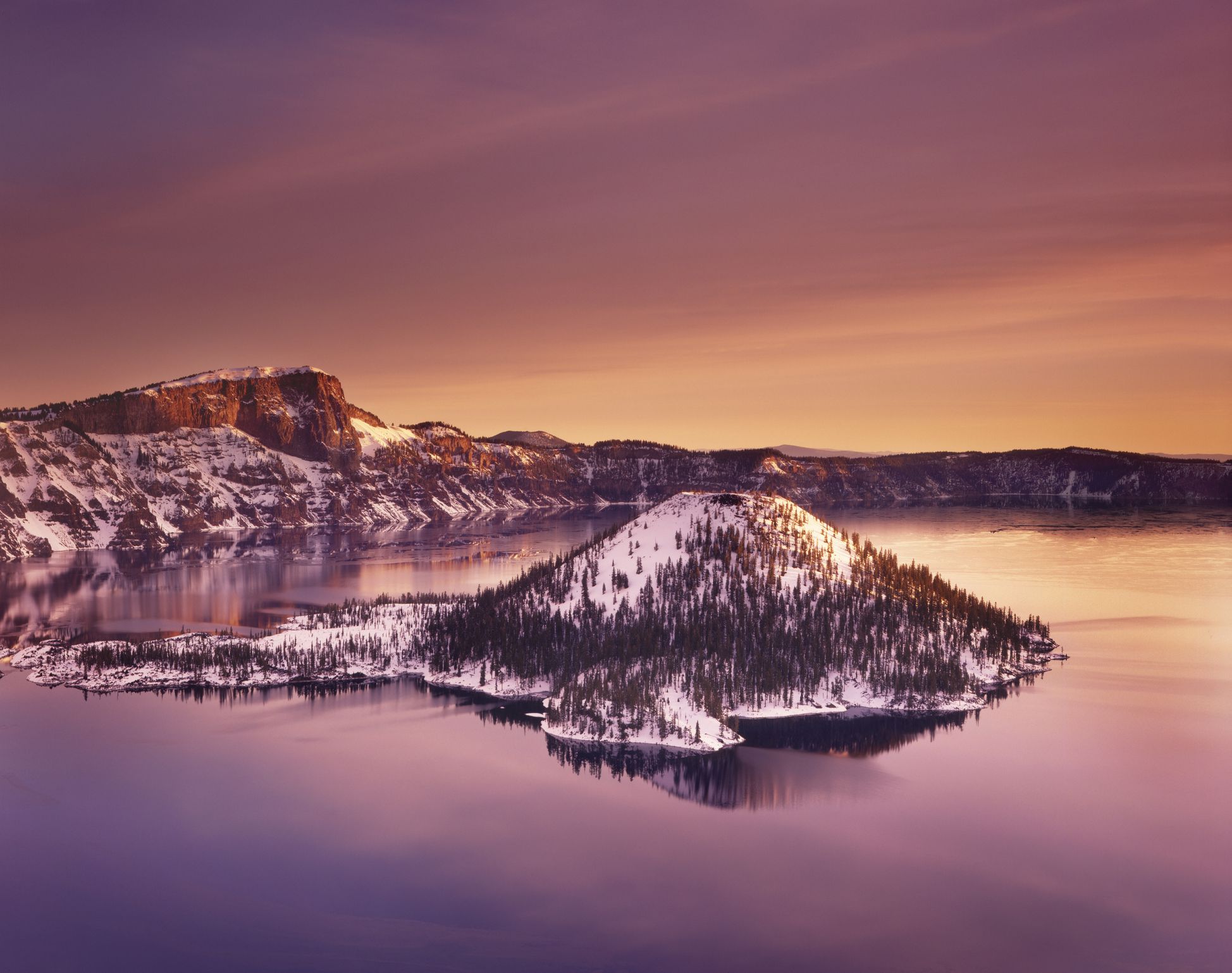
Love snow? Chances are good Crater Lake will have it — it gets an average of 42 feet (feet!) each year. It allows for an otherworldly view of Wizard Island, actually the remains of a volcanic cinder cone that rise 750 feet above the lake’s surface.
Related: National Park Webcams Where You Can See the Wilderness From Home
